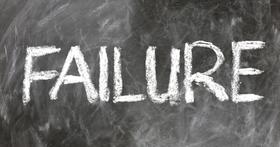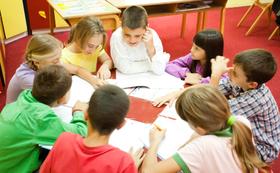Serving 390 students in grades 6-12, Noel Community Arts School ranks in the bottom 50% of all schools in Colorado for overall test scores (math proficiency is bottom 50%, and reading proficiency is bottom 50%).
The percentage of students achieving proficiency in math was ≤5% (which was lower than the Colorado state average of 32%). The percentage of students achieving proficiency in reading/language arts was 15-19% (which was lower than the Colorado state average of 45%).
The student-teacher ratio of 14:1 was lower than the Colorado state level of 15:1.
Minority enrollment was 95% of the student body (majority Hispanic), which was higher than the Colorado state average of 50% (majority Hispanic).
School Overview
Grades Offered
Grades 6-12
(No virtual instruction)
(No virtual instruction)
Total Students
390 students
Gender %
Total Classroom Teachers
28 teachers
School Calendar
School Rankings
Math Test Scores (% Proficient)
(21-22)≤5%
32%
Reading/Language Arts Test Scores (% Proficient)
15-19%
45%
Science Test Scores (% Proficient)
(20-21)≤10%
29%
Student-Teacher Ratio
14:1
15:1
American Indian
n/a
1%
Asian
1%
3%
Hispanic
59%
36%
Black
26%
5%
White
5%
50%
Hawaiian
5%
n/a
Two or more races
4%
5%
All Ethnic Groups
Graduation Rate
(21-22)70-74%
82%
Eligible for Free Lunch
74%
39%
Eligible for Reduced Lunch
13%
6%
School Statewide Testing
School District Name
Source: National Center for Education Statistics (NCES), CO Dept. of Education
Profile last updated: 02/09/2025
Frequently Asked Questions
What percent of students have achieved state testing proficiency in math and reading?
≤5% of students have achieved math proficiency (compared to the 32% CO state average), while 15-19% of students have achieved reading proficiency (compared to the 45% CO state average).
What is the graduation rate of Noel Community Arts School?
The graduation rate of Noel Community Arts School is 70-74%, which is lower than the Colorado state average of 82%.
How many students attend Noel Community Arts School?
390 students attend Noel Community Arts School.
What is the racial composition of the student body?
59% of Noel Community Arts School students are Hispanic, 26% of students are Black, 5% of students are White, 5% of students are Hawaiian, 4% of students are Two or more races, and 1% of students are Asian.
What is the student-teacher ratio of Noel Community Arts School?
Noel Community Arts School has a student ration of 14:1, which is lower than the Colorado state average of 15:1.
What grades does Noel Community Arts School offer ?
Noel Community Arts School offers enrollment in grades 6-12 (No virtual instruction).
What school district is Noel Community Arts School part of?
Noel Community Arts School is part of School District No. 1 In The County Of Denver And State Of C.
In what neighborhood is Noel Community Arts School located?
Noel Community Arts School is located in the Montbello neighborhood of Denver, CO. There are 15 other public schools located in Montbello.
Recent Articles

Charter Schools vs Public Schools 2025: Key Differences & Trends
Explore updated 2025 insights comparing charter schools vs public schools, enrollment, academic outcomes, funding, and real-world examples for families and educators.

Are Public Schools Ready for the 21st Century? 2025 Update
Explore 2025 insights on whether public schools are ready for the 21st century, covering performance, technology, equity, funding, and future-ready learning.

Public School Open House & Enrollment Season Guide
A parent-focused guide to the public school open house and enrollment season, with expert questions, timelines, and decision tips.





